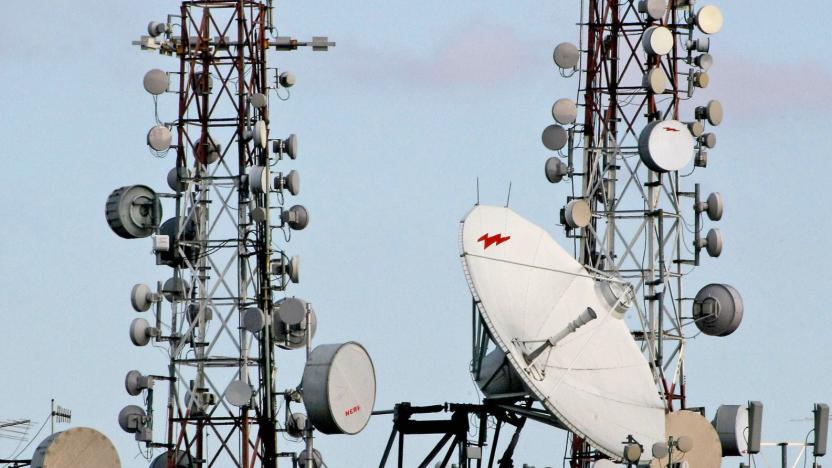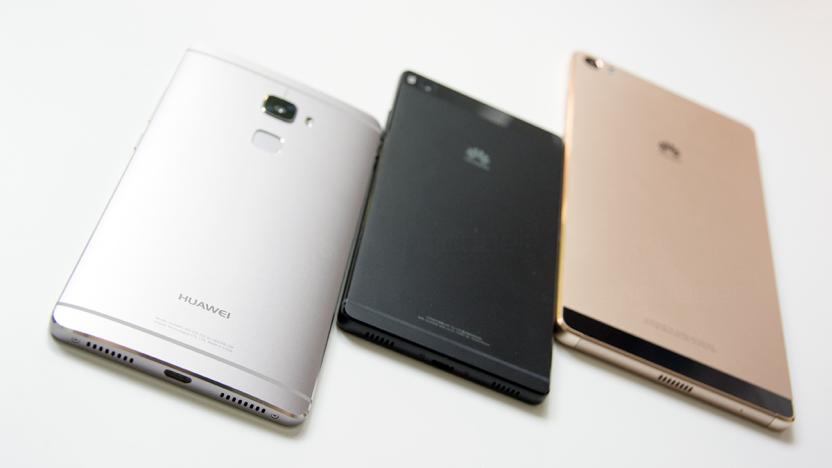CarrierAggregation
Latest

Samsung's latest LTE modem supports faster-than-fiber speeds
If you're in the market for the Galaxy S9 next year, it could have a modem that's faster than your home fiber connection. Samsung has unveiled a co-called 6CA (carrier aggregation) modem that can handle download speeds as high as 1.2 Gbps, fast enough to download a full-length HD movie in 10 seconds.

HTC's high-end Bolt is a fast, fascinating Sprint exclusive
No one would fault you if you thought HTC was done making high-end smartphones for the year. It wasn't perfect, but the HTC 10 was a highly respectable piece of kit. And HTC's design and production fingerprints can be found all over both of Google's new Pixel phones. That's a decent string of smartphones for 2016, but HTC had to go and partner up with Sprint on the curious new Bolt, a device meant to highlight Sprint's high-speed 3x20MHz carrier aggregation. Fair enough, but what makes the $599 Bolt so interesting is how it takes the 10's formula and improves on it.

Huawei's next chipset may give competitors a run for their money
Huawei is now Europe's second largest Android brand, according to Kantar, but there's just no time for celebration. Not too long after launching the Huawei Mate S and the Nexus 6P, the Chinese telecom giant is already teasing the launch of the Mate 8 on November 26. Little is known about this new smartphone so far, but it'll likely be using Huawei's upcoming Kirin 950 chipset announced today, which joins the Apple A9 chip to be one of the first to use TSMC's 16nm FinFET Plus process for improved efficiency. Like its predecessor, the Kirin 950 has an octa-core processor but with much improved performance: 4 x Cortex-A72 and 4 x Cortex-A53 instead of the old mid-range offering of just eight Cortex-A53 cores. It also uses ARM's flagship Mali-T880 GPU so gaming should be blast on the phone.

ASUS brings PadFone X to AT&T with LTE-Advanced support and Voice over LTE
You can count the number of ASUS devices that have been carried by AT&T on two fingers, but the GSM network is ready to show off the duo's third collaboration. Dubbed the PadFone X, this is the first in the series to be sold in the US, which ASUS CEO Jerry Shen teased to us last month. The concept is exactly the same as previous PadFones sold in other parts of the world; the hybrid setup consists of a 5-inch smartphone that docks with a 9-inch tablet shell (or "station"), and your smartphone info carries over to the tablet when it's docked. In addition to its unique place as the first of its kind in the US, the X also boasts support for a couple of network features that haven't yet been activated on AT&T's network: Voice over LTE (VoLTE) and LTE-Advanced with Carrier Aggregation. Since pricing and availability for both the device and its unique features are still unknowns at this point, we have a strong suspicion that it'll launch as soon as AT&T is ready to activate its LTE-A network. Specs are relatively scarce at this point (AT&T tells us that we can expect more details at ASUS' press conference shortly), but we know that the device will feature Android 4.4 KitKat, full HD displays and a "large battery" of unknown size. We'll update the post as we hear more, and we expect to get some hands-on time with it soon. Update: Head over past the break to gander at some photos of the device(s) behind glass, ones that we took at the ASUS In Search of Incredible event.

Hong Kong's CSL demos 300Mbps LTE Advanced service, due early 2014 (video)
It was only about four months ago when CSL, Telstra's part-owned operator behind Hong Kong's one2Free and 1010 networks, showed off its 150Mbps LTE Cat 4 upgrade; but why stop there? Today, the same company gave us a glimpse of its upcoming 300Mbps LTE Advanced service, which is enabled by aggregating its 20MHz carriers at both its 1,800MHz and 2,600MHz LTE bands. "The announcements in Korea and the announcements in Australia around LTE Advanced... the theoretical speed that they're delivering is 150Mbps. What we're talking about today is LTE-A300," said Phil Mottram, CEO of CSL. "It's definitely a first for Hong Kong, and it's potentially a world-first in terms of being able to deliver these theoretical, maximum download speeds at 300Mbps."

Broadcom outs smaller, more efficient LTE-Advanced modem for high-spec mobiles
Welcome to the BCM21892. It may sound like every other piece of Broadcom silicon we've covered, but it actually represents an important move from a company that is eager to start pecking at Qualcomm's lunch. First and foremost, this is a 4G modem for flagship phones rather than any budget fare, with support for LTE-Advanced and data speeds of up to 150Mb/s. To deliver that kind of performance, carriers either need 20MHz of contiguous bandwidth -- a rarity these days -- or they need carrier aggregation technology, which allows a modem to exploit separate chunks of bandwidth simultaneously. The BCM21892 boasts that spec too, not to mention compatibility with most of the popular network standards in use around the world, from the TD and FD types of LTE right down to HSPA+, TD-SCDMA and EDGE/GSM. Finally, through a combination of small transistors (28nm) and clever algorithms, the chip is claimed to reduce power consumption by 25 percent compared to rival devices, and also to take up less space -- potentially leaving more room for other goodies (Broadcom suggests NFC). The chip is still only at the the sampling stage, however, so the folks at Qualcomm shouldn't have too much to worry about until at least 2014.



